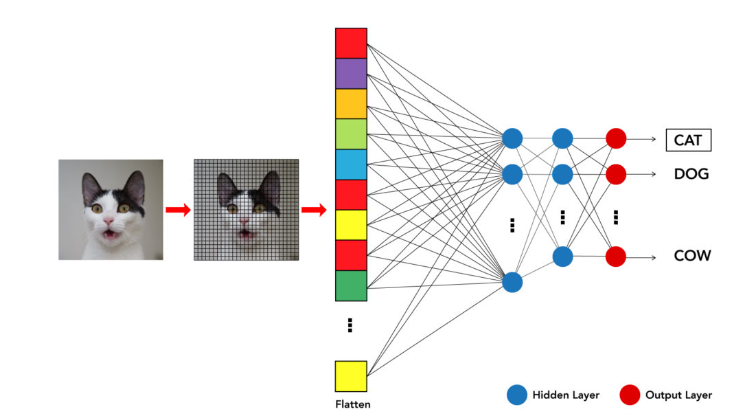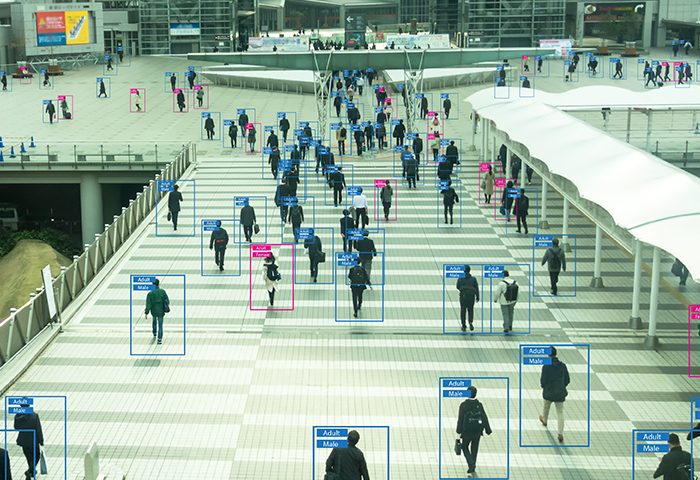Revolutionizing Industries: The Power of Image Recognition in 2023 and beyond

Audio : Listen to This Blog.
Introduction
The field of image recognition has been at the forefront of the exponential growth in technology that we’ve seen in recent years. At a compound annual growth rate (CAGR) of 17.4% from 2020 to 2025, the worldwide image recognition market is forecast to be worth $38.2 billion in 2025. This state-of-the-art AI technology has quickly spread across a wide range of industries, reshaping practices, boosting output, and providing better service to end users. In this blog post, we’ll look at how image recognition already creates waves across various sectors and transforms the business world.
What is Image Recognition?
Image recognition is a subfield of computer vision that includes instructing computers to read and comprehend images. It’s a method for teaching computers to “see” and understand visual content like people do. Machine learning algorithms that examine visual data for patterns, shapes, and characteristics do this.
Identifying objects in images is the focus of the computer vision subfield known as image recognition. It’s a fast-expanding industry with several potential uses, including autonomous vehicles and medical diagnosis.
An image is initially dissected into its component pixels by image recognition algorithms. After collecting this data, the system will examine the patterns inside the pixels to see whether they match any recognized items. The term “feature extraction” is commonly used to describe this process.
The system can perform object classification after it has recognized its characteristics. This is accomplished by comparing the object’s attributes to those of other items in a database.
A wide range of items can be taught to image recognition systems. Training the algorithm with more data will improve its accuracy.

Source:Great Learning
How does Image Recognition work?
Typically, one of two methods is used by image recognition systems:
1. Traditional methods:
These ways of identifying things use details that were made by hand. People make hand-crafted features to fit the task at hand.
2. Machine learning:
These approaches use machine learning algorithms to learn the features essential to the job naturally. Machine learning methods are becoming more and more popular because they can learn to recognize objects more correctly than traditional approaches.
Now, let’s look at how image recognition is revolutionizing the various industries:
1. Health care: a precise diagnosis can save lives
New diagnostic tools and therapeutics are being created with image recognition, which is predicted to grow the medical imaging market to $320.8 billion by 2025. Image recognition is starting to change the way treatment is done. It helps doctors diagnose diseases with an accuracy that can’t be beaten. AI-driven picture recognition is saving lives by giving early and accurate assessments. For example, it can find tumors in X-rays and abnormalities in pathology slides.
2. Retail: Changing the way people shop
In the retail world, picture recognition makes in-store and online shopping much more personal. Smart shelves can tell when a product is running low and restock it; visual search makes it easy for customers to find what they want. With virtual try-on, you don’t have to guess when you buy clothes online, which makes customers happier.
3. Self-driving cars will make the road safer
Image recognition is a crucial technology being utilized in the development of self-driving automobiles, which is predicted to grow to a market size of $86.6 billion by 2025. Image recognition is the key to self-driving cars for the auto business. The eyes of these cars are cameras and sensors that use image recognition to see where they are going, find barriers, and make sure the trip is safe. Picture recognition is the way to go as we move towards self-driving cars.
4. Agriculture: Transforming the way crops are managed
Image recognition powered by AI is making crop control better in agriculture. Drones with cameras take pictures of farms, which can be used to find diseases and pests in real-time. This makes it possible to make exact changes, cutting down on harmful chemicals and increasing food yields.
5. Security: Making safety better
Image recognition technology helps security systems all over the world. The worldwide security market was worth USD 119.75 billion in 2022, and it is anticipated to expand at a CAGR of 8.0% from 2023 to 2030. The proliferation of security systems may be attributed to the growth in criminal activity, terrorism, fraudulent schemes worldwide, and stricter regulatory regulations. Face recognition, finding objects, and finding unusual things make places safer. This technology keeps us safe from airports to houses by letting us know who is around and who might be a threat.
6. E-commerce: A Revolution in the Way We Shop
Visual shopping is changing the way people shop online. Consumers can find goods by taking pictures of them thanks to image recognition, which drives visual search. Product tagging makes online shopping more accessible, and virtual try-ons for clothes and items improve the user’s experience.
7. Content Moderation: Making the Internet a Safe Place
Image recognition is increasingly used to moderate material on social media apps and websites. This technology instantly finds and eliminates dangerous or inappropriate material, making the Internet safer for people of all ages.
8. Protecting the environment: helping with conservation efforts
Image recognition helps keep the world healthy. It helps keep track of the number of animals, find criminal trapping, and measure deforestation. AI-powered systems that can discover reusable materials also make it easier to get responsibly rid of trash.
9. Accessibility: Making everyone feel welcome
Image recognition is one of the most essential parts of making the digital world easier to use. It turns the words in pictures into speech, so people who can’t see can still get information. Object recognition apps help with everyday jobs by figuring out what things are in real-time.
10. Problems and ethical things to think about
As picture recognition is increasingly used, problems with bias, privacy, and data protection must be solved. For AI to reach its full potential, it is crucial to ensure its methods are fair and safe.
Conclusion
Image recognition is more than just a technology tool in 2023 and beyond. It’s a driving force of progress, transforming whole sectors while raising productivity and bettering people’s lives. We must prioritize ethical issues and data protection as we embrace the ever-expanding capabilities of image recognition to guarantee that these developments will be used for society’s greater good. We may look forward to a future where image recognition continues to give us agency, ushering in more intelligent, secure, and individually tailored interactions in various fields.
MSys Technologies: Facilitating Your Organization’s Digital Evolution
Here at MSys Technologies, we firmly believe in the game-changing potential of tools like image recognition. Our digital services are made to help companies of all sizes and in all industries take advantage of cutting-edge technologies like image recognition. Our team of professionals is here to assist you with all aspects of digital transformation, from designing user-friendly interfaces to expanding your data resources.
We’re here to help your company become more responsive to market changes, data-driven, and capable of producing intelligent, scalable solutions. Our extensive digital offerings include everything you need, including mobility, analytics, the Internet of Things, artificial intelligence/machine learning, and big data.
Are you prepared to speed up your transition into the technological future? Contact us at [email protected] right away so we can begin discussing the opportunities that await us.
